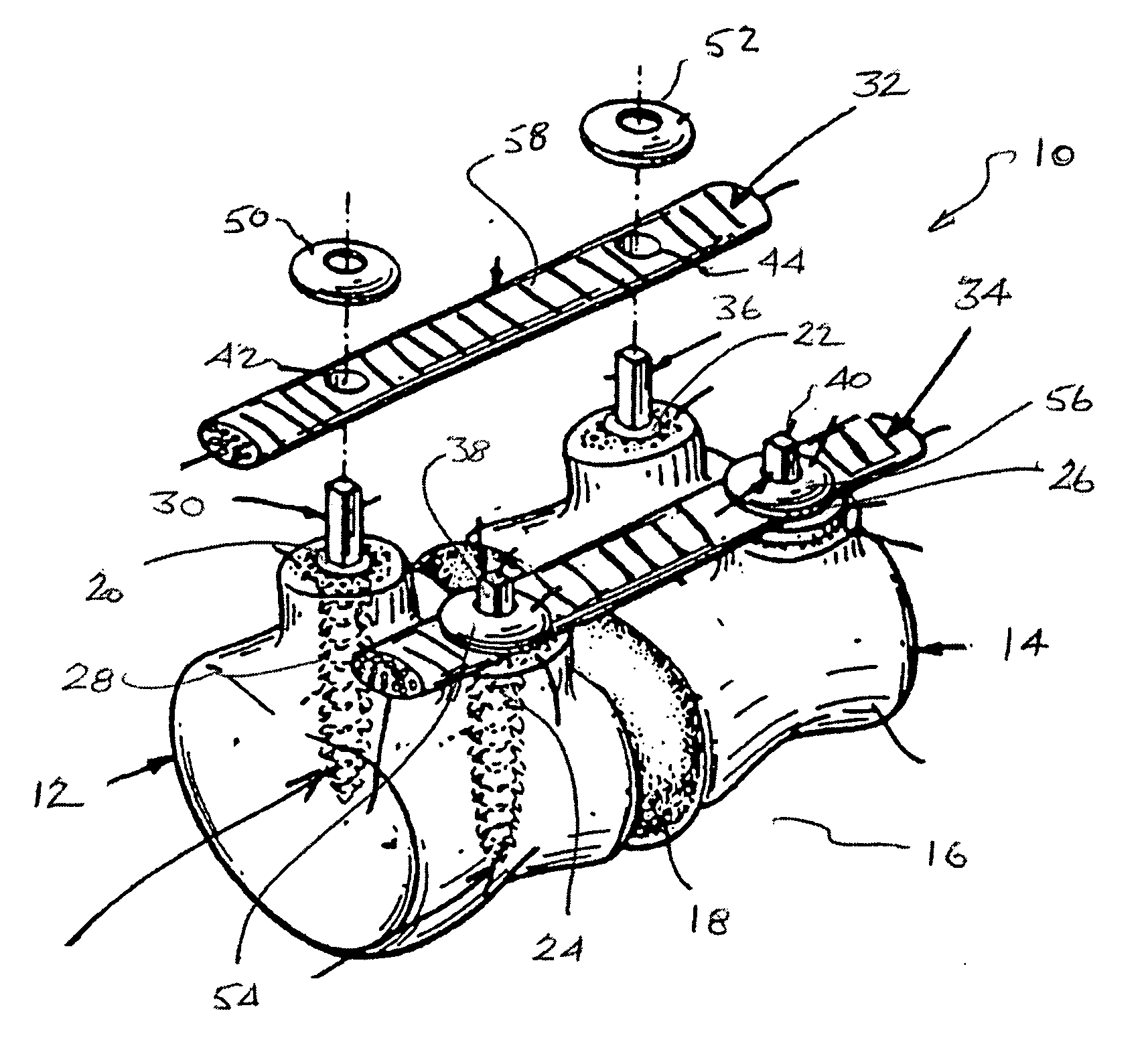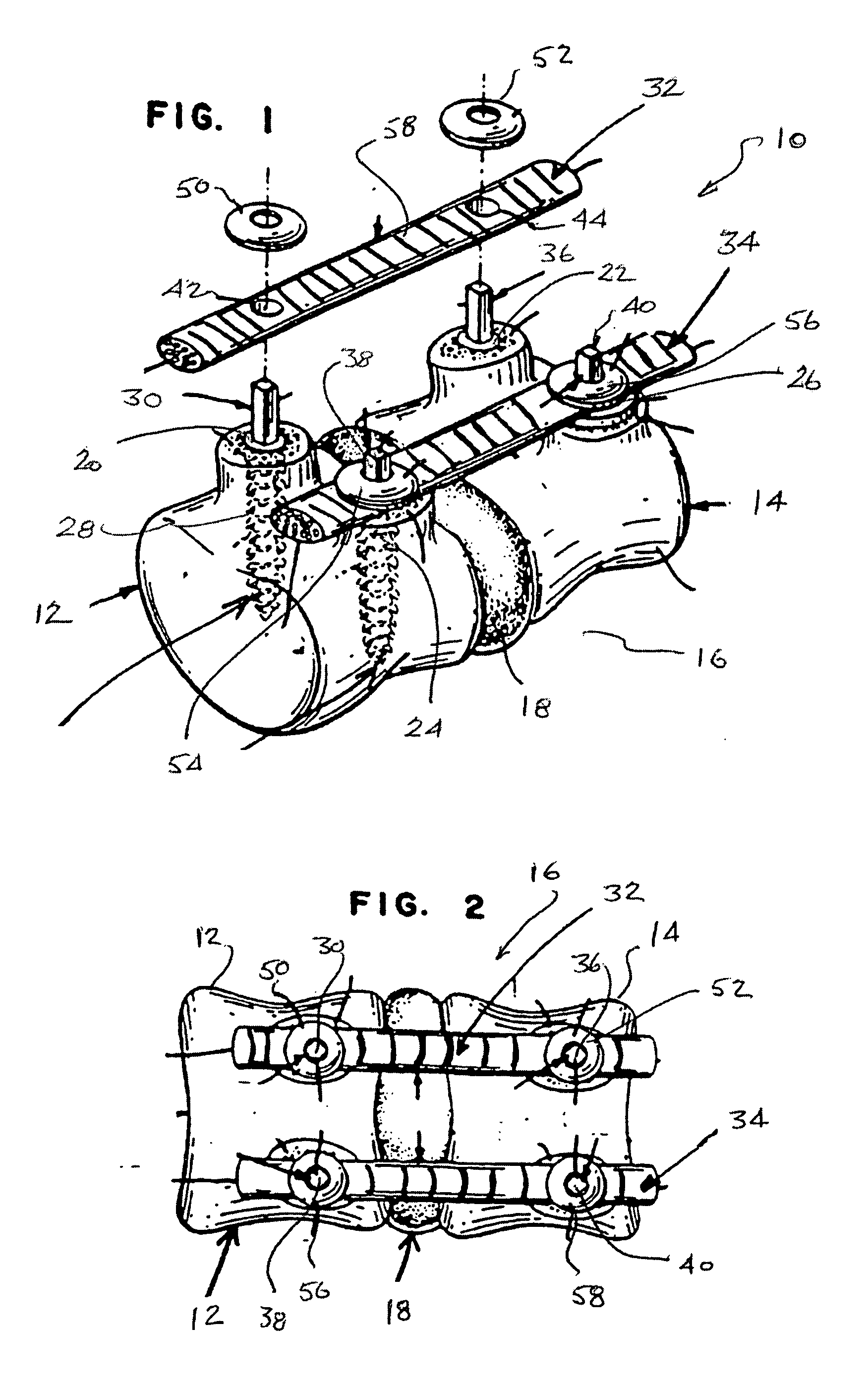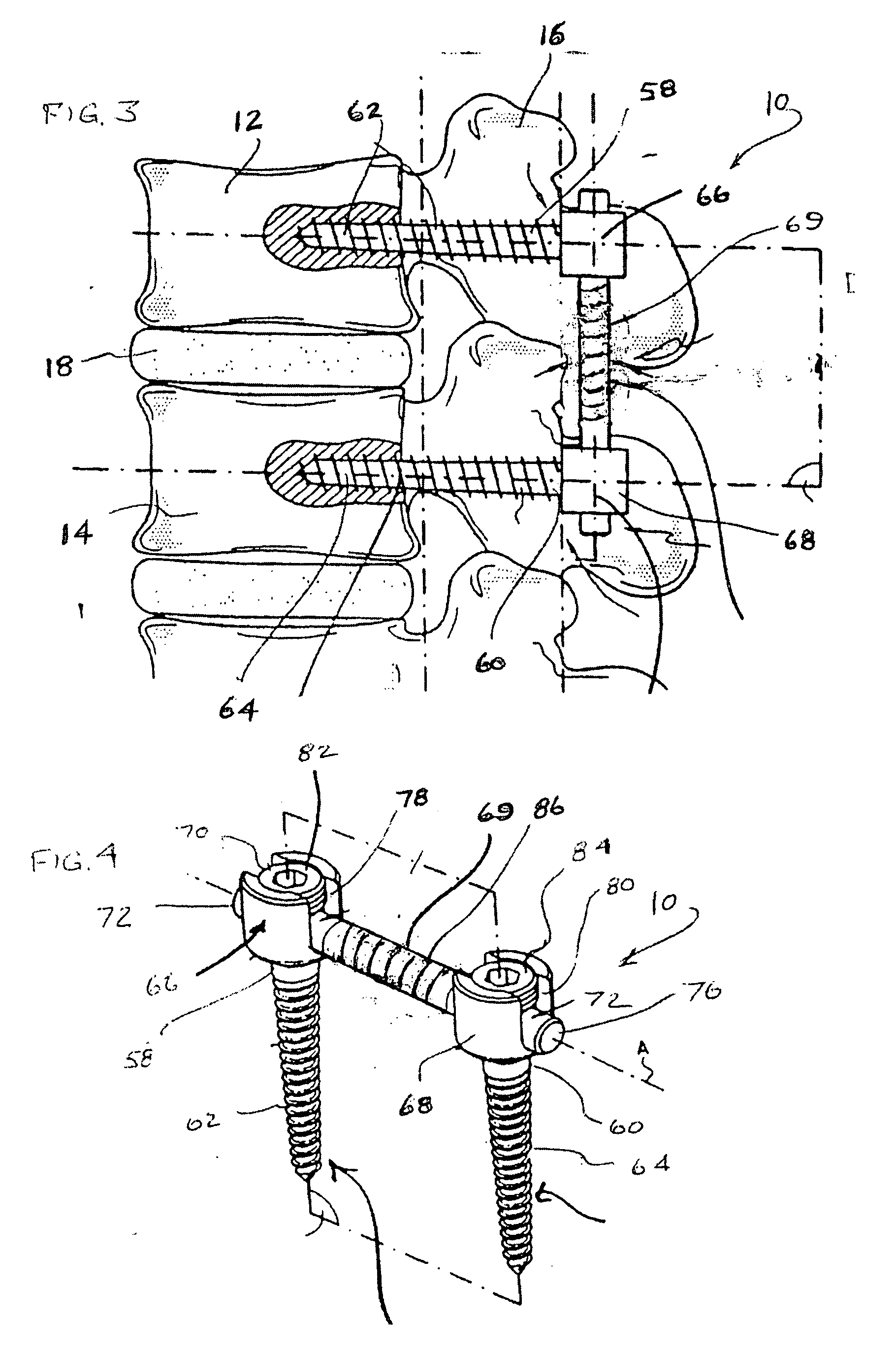Dynamic spinal stabilization system
a spinal column and dynamic technology, applied in the field of dynamic spinal column stabilization system, can solve the problems of achieve the effect of reducing the loss of patient activity and reducing the flexibility of the spinal column
- Summary
- Abstract
- Description
- Claims
- Application Information
AI Technical Summary
Benefits of technology
Problems solved by technology
Method used
Image
Examples
Embodiment Construction
[0030] Referring now to FIG. 1, there is shown a partially exploded view illustrating an exemplary dynamic spinal stabilization system 10 of the present invention affixed to the adjacent vertebrae 12, 14 of spinal column 16. As can be seen, the vertebrae 12, 14 are separated by a disc 18 that may be a natural disc or may be a prosthetic device that has taken the place of a normal disc by a replacement thereof. As shown, the upper portion of the vertebrae 12, 14 is the posterior side facing the posterior of the patient and the lower portion is the anterior side facing inwardly of the patient. Therefore it can be seen that the stabilization system is affixed proximate to the posterior of the spinal column 16.
[0031] There are a plurality of anchoring members 20, 22, 24 and 26 and are components of the present stabilization system 10 and two of the anchoring members, 20 and 24 are positioned side by side affixed to vertebra 12 and anchoring members 22, 26 are positioned side to side af...
PUM
 Login to View More
Login to View More Abstract
Description
Claims
Application Information
 Login to View More
Login to View More - R&D
- Intellectual Property
- Life Sciences
- Materials
- Tech Scout
- Unparalleled Data Quality
- Higher Quality Content
- 60% Fewer Hallucinations
Browse by: Latest US Patents, China's latest patents, Technical Efficacy Thesaurus, Application Domain, Technology Topic, Popular Technical Reports.
© 2025 PatSnap. All rights reserved.Legal|Privacy policy|Modern Slavery Act Transparency Statement|Sitemap|About US| Contact US: help@patsnap.com



